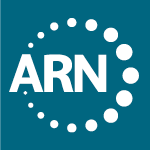Role of the Licensed Vocational/Practical Nurse on the Rehabilitation Team
It is the position of the Association of Rehabilitation Nurses (ARN) that the Licensed Practical/Vocational Nurse (LPN/LVN) is recognized in the rehabilitation setting as a valuable and contributing member of the rehabilitation team. Licensed practical nurses (LPNs), called Licensed Vocational Nurses (LVNs) in Texas and California, (Seago & Ash, 2002), have been working with physicians and registered nurses in many settings for years. Most LPN/LVN’s work in a hospital, skilled nursing facility, home health, rehabilitation, or an ambulatory setting with a growing number in the private sector.
The licensing requirements for the Licensed Practical/Vocational Nurse (LPN/LPN) vary by state in accordance with their state Nurse Practice Act. ARN supports each state’s individual scope of practice while realizing the valuable role of the LPN/LVN on the rehabilitation nursing team.
Scope of Practice
Licensed Practical/Vocational Nurses represent the entry level into the nursing profession and are integrated into many areas of care. One of the broadest descriptions of LPN scope of practice comes from the U.S. Department of Labor Occupational Outlook Handbook: “Licensed practical nurses… care for the sick, injured, convalescent, and disabled under the direction of physicians and registered nurses" (US Department of Labor, 2004).
While LPN/LVN’s do not have the same depth of knowledge as registered nurses, they participate in many different settings to the extent of their basic knowledge and continuing education under the supervision of an RN including direct and indirect nursing care, health maintenance, teaching, counseling, collaborative planning, and rehabilitation (Jacelon, 2011). The National Federation of Licensed Practical Nurses (NFLPN) recognizes that opportunities exist to utilize the skills of the LPN in “a team effort: to preserve and improve an individual patient’s functioning” (NFLPN, 2003).
Common Duties of the LPN/LVN
Many tasks are performed regardless of the job environment and the LPN/LVN will usually be the first medical professional to work with a patient (Licensed Practical Nurse, 2013).
The following are common duties which include but are not limited to:
- Recording the patient’s history
- Giving medication as prescribed by the physician
- Taking vital signs such as blood pressure, temperature, and weight
- Basic wound care including cleaning and bandaging injured areas
- Giving injections of medications
- Providing immunizations
- Entering information into computer systems
- Ensuring patients and families understand release instructions
- Providing oversight to Nursing Assistive Personnel (NAP)
- Monitoring fluid/food intake and output
- Moving patients safely
- Observing patient reactions to medications
- Observing patient mental health status
- Providing emotional support
- Assisting with daily needs such as bathing and dressing
- Observing of patients for skin breakdown
In general, individual state practice acts require that the LPN/LVN must work under the supervision of a registered nurse, advanced practice nurse, physician, or in some states, pharmacists, podiatrists, or others. Refer to your state’s individual practice act for current information.
References
Jacelon, C.S. (Ed.). (2011). The Specialty Practice of Rehabilitation Nursing: A Core Curriculum (6th ed). Glenview, IL: Association of Rehabilitation Nurses.
Lehman. C. (Ed.). (2015). The Specialty Practice of Rehabilitation Nursing: A Core Curriculum (7th ed). Glenview, IL: Association of Rehabilitation Nurses.
Licensed Practical Nurse (2013). Job description of an LPN. Retrieved from http://www.licensedpracticalnurse.net/lpn-job-description/.
National Federation of Licensed Practical Nurses. (2003). Nursing Practice Standards for the
Licensed Practical/Vocational Nurse. Retrieved from http://lpntraininglocations.com/%e2%80%a2national-federation-of-licensed-practical-nurses-nflpn/.
Seago, J. A., & Ash, M. (2002). Registered Nurse Unions and Patient Outcomes. Journal of Nursing Administration, 32(3), 143-151.
U.S. Department of Health and Human Services, Health Resources and Services Administration. (2004). Supply, Demand, and Use of Licensed Practical Nurses. Retrieved from http://bhpr.hrsa.gov/healthworkforce/reports/supplydemanduselpn.pdf.
Resources
Association of Rehabilitation Nurses. (n.d.-a). Rehabilitation Nurses Make a Difference [Brochure]. Glenview, IL: Author. Association of Rehabilitation Nurse. (n.d.-b). The Rehabilitation Staff Nurse Role Description
[Brochure]. Glenview, IL: Author.
U.S. Department of Labor, Bureau of Labor Statistics. (2010). Licensed Practical and Licensed
Vocational Nurses. In Occupational Outlook Handbook, 2010–2011 edition. Retrieved July 28, 2010, from www.bls.gov/oco/ocos102.htm.
Approved by the ARN Board of Directors July 2010, revised March 2014, revised February 2018.

